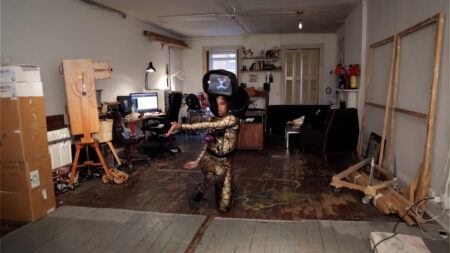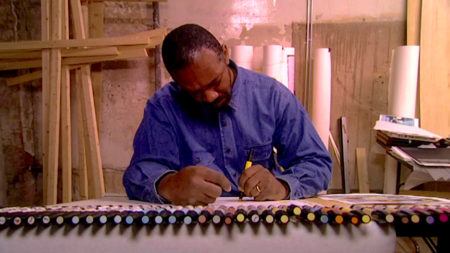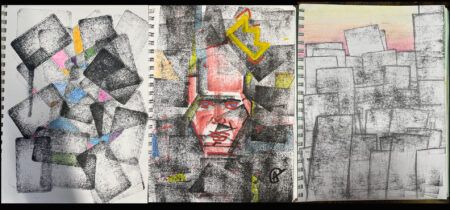Teaching with Contemporary Art
Deepening Connections with Cross-Curricular Collaboration
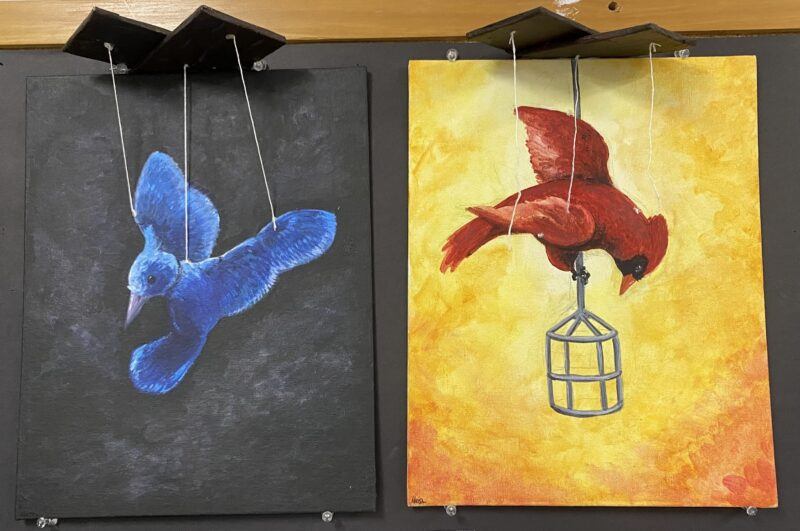
Courtesy of Nikki Sandschaper.
Too often, cross-curricular collaborations are reduced to a supportive role, focusing on aesthetics rather than substance. While well-intended, this approach overlooks the studio’s true potential as a place of inquiry, exploration, and meaning-making. Art21 films offer insight into the diverse ways artists navigate their processes, helping young artists see that art is more than simply aesthetics—it’s a way of connecting to yourself and the world around you.
Each spring, my small school’s theatrical production turns the campus into a whirlwind of creativity. I enjoy the challenge of capitalizing on this energy to spark deeper, more personal connections to the themes unfolding on stage. Inspired by constructivist and inquiry-based learning theories, I have found that when students use studio processes to explore themes across disciplines, they develop the ability to transfer abstract concepts into new contexts. This is an essential yet difficult skill, and the studio classroom offers a rich environment to practice it. When students engage in thematic exploration, they reveal the true power of the studio, where creativity and critical thought work together freely. They see art as not just about techniques and following directions but about pushing boundaries, challenging assumptions, and making sense of the world around them.
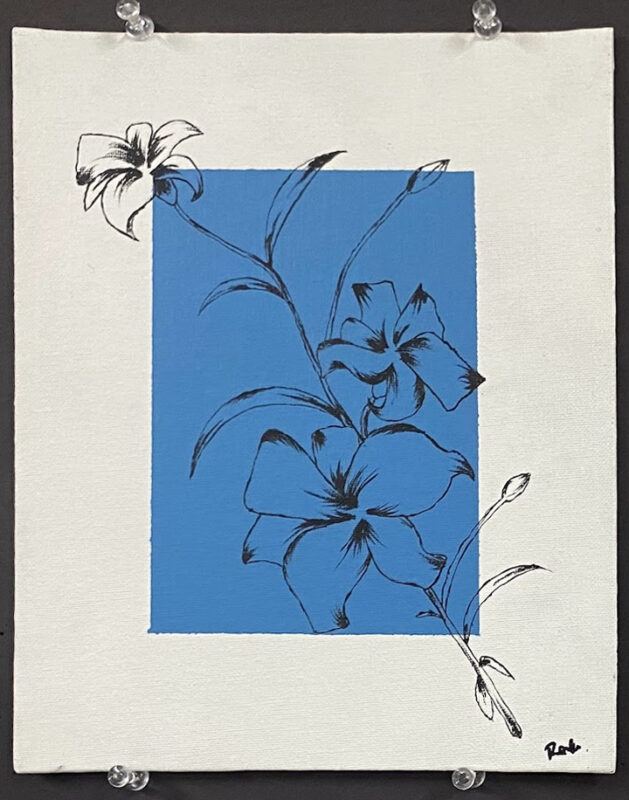
Courtesy of Nikki Sandschaper.
When I begin a theme-based unit, I look for a hook: something open-ended, conceptually rich, and inviting personal interpretation. When our school performed Matilda, discussions with insightful Art21 educators helped me identify key themes. After watching the play myself, I found the perfect hook. Just before the song “Quiet,” Matilda is overwhelmed by external chaos as her villainous principal is screaming at her. We watched this scene and paused at this moment to discuss what restriction feels like. Then, we continued the scene as the song began and she found her inner strength. This scene, rich with visual metaphors, contrasts floating and freedom against tension and control, deepening our conversation about the relationship between restriction and freedom, and helping students bridge themes from the play to their own experiences. As students connected to the themes, they discussed ideas with one another and brainstormed ways to translate them visually. This process of pulling from multiple sources, including their own perspectives, strengthens students’ critical thinking skills, pushing them beyond literal representation into abstraction and metaphor.
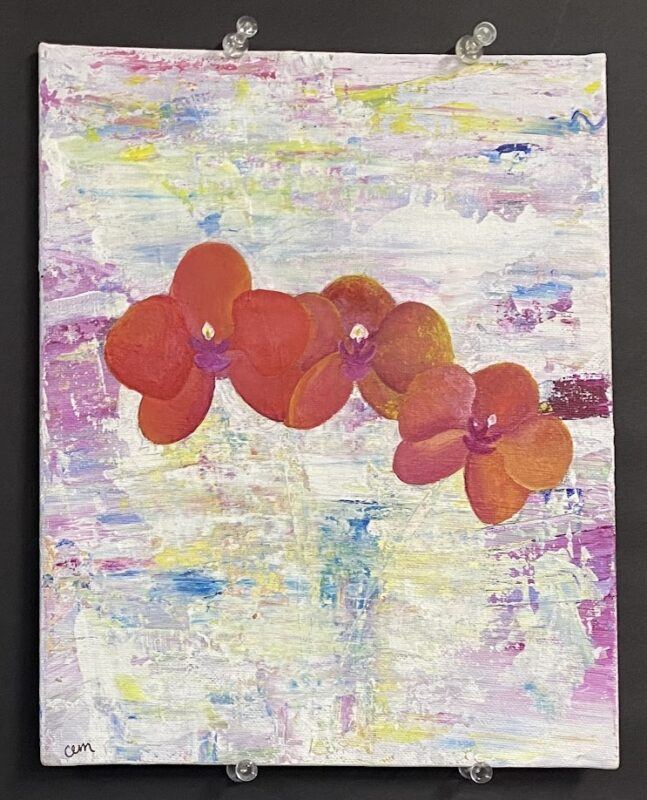
Courtesy of Nikki Sandschaper.
As students developed their ideas, I used the theme as a lens not only for their work but for the creative process itself. They had full creative freedom in concept and exploration but could only use acrylic paint within a limited timeline. By working within these constraints, students experienced the tension and freedom firsthand, making the theme even more tangible. To extend this exploration, we turned to Art21 films featuring contemporary artists navigating similar challenges. One of my favorite films to watch with young painters is “Bop” with Elizabeth Murray. The moment that she admits that she sometimes wants to tear her work to pieces always resonates with students. It sparks honest conversations about frustration, perseverance, and the role of limitations, both external and self-imposed, in shaping creativity. Later, as students refined their ideas, we examined how restriction can lead to creative solutions by viewing Cannupa Hanska Luger’s Mirror Shield Project in “Friends & Strangers.“ His work expanded our discussions to new media and moved beyond personal struggles to include social and political themes of agency, resistance, and struggle, echoing themes found in Matilda. These connections helped students recognize that the push and pull between freedom and restriction is universal, influencing both artistic practice as well as life beyond the studio.
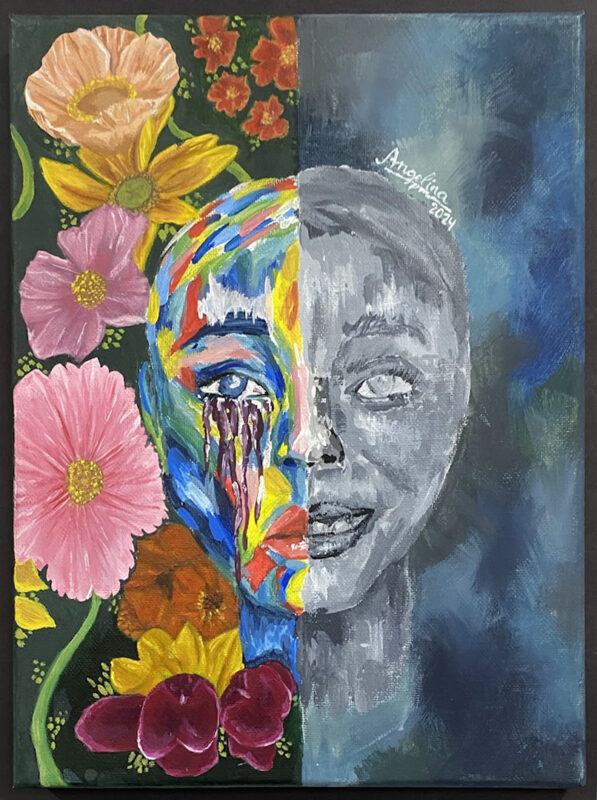
Courtesy of Nikki Sandschaper.
This unit culminated with an exhibition, complete with artist statements articulating each student’s interpretation of freedom and restriction, displayed in the theater lobby during the play. As families and community members viewed the work, they engaged with themes from Matilda in new ways through the eyes of our young artists. This kind of cross-curricular connection shows that the art studio is a place for deep thinking, dialog, and self-expression. When we elevate art beyond decoration and into meaningful conversation, we give students an opportunity to engage with complex ideas that are both personal and intellectually rigorous. More importantly, they experience the joy of intellectual play, learning to embrace complexity and approach abstract thinking as an ongoing meaningful practice that extends beyond the studio and into their lives. This kind of learning empowers young artists to think deeply, create boldly, and navigate the world with curiosity and confidence.
Book Suggestion:
Marshall, Julia, et al. Teaching Contemporary Art with Young People : Themes in Art for K-12 Classrooms. New York, Teachers College Press, 2021.
